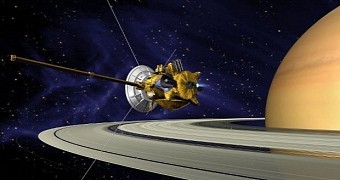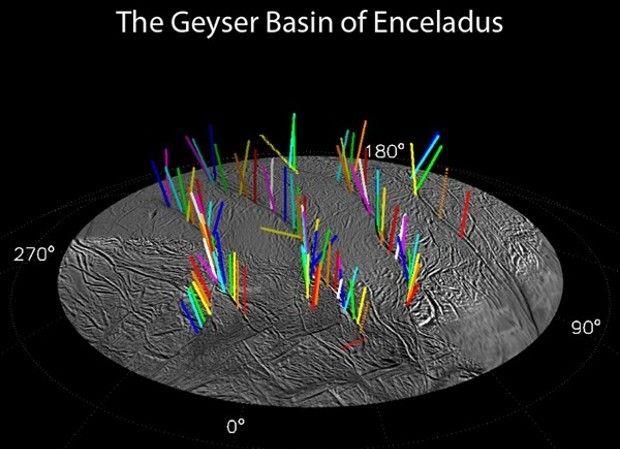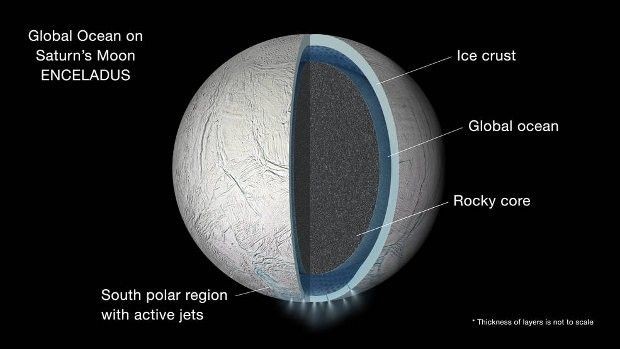NASA's Cassini probe launched from the Cape Canaveral Air Force Station in Florida nearly two decades ago, in 1997. It reached the Saturn system in 2004 and has been studying the planet and its accompanying moons ever since.
In late 2005, mission scientists announced that, while surveying Saturn's moon Enceladus, the probe had encountered jets of fine, icy particles streaming into space from its surface. These jets were the first ever unambiguous visual evidence of geological activity on the orb.
Then, more recently, another study announced the discovery of as many as 101 geysers stemming from the moon's south polar region. The geysers, seen by Cassini erupting every now and again, hinted at the presence of liquid water on Enceladus.
“The geysers are not a near-surface phenomenon, but have much deeper roots,” researcher Carolyn Porco with the Space Science Institute in Boulder, Colorado, said in a statement at the time.
As it turns out, all these educated guesses were spot on
In a report published earlier this week in the science journal Icarus, researchers present evidence that, as predicted based on geological processes observed by Cassini over the years, Enceladus does in fact hide a mammoth ocean under its icy crust.
This ocean stands between the moon's rocky core and its crust. Scientists are yet to determine how deep it might be. All the same, based on evidence at hand, they are confident to say that it surrounds the orb in its entirety. It's one of Enceladus' layers, if you will.
This hidden ocean is believed to feed the jets of fine particles and probably also the geysers observed by NASA's Cassini probe in the moon's south polar region. Some say that, if it really is made up of liquid water, it might also harbor alien life.
“The finding implies the fine spray of water vapor, icy particles and simple organic molecules Cassini has observed coming from fractures near the moon's south pole is being fed by this vast liquid water reservoir,” mission scientists at NASA explained in a report.
How does one discover a hidden ocean on a faraway orb?
Saturn's moon Enceladus lies at a distance of nearly 1.3 billion kilometers (0.8 billion miles) from Earth, so taking a shovel to its icy crust to see what lies under it is pretty much out of the question. Well, at least for now. The Cassini probe is not equipped to drill into alien orbs either.
Hence, to determine the moon's inner anatomy, scientists had to turn to good old math, a whole lot of it and not of the easy-peasy kind. They closely studied the orb's behavior while circling Saturn and found that Enceladus wobbles ever so slightly in its orbit.
Then, equations showed them this wobble, called libration in the field of astronomy, could only be explained if Enceladus was not frozen in its entirety but instead had an ocean lurking under its crust.
“If the surface and core were rigidly connected, the core would provide so much dead weight the wobble would be far smaller than we observe it to be. This proves that there must be a global layer of liquid separating the surface from the core,” said researcher Matthew Tiscareno.
Mind you, there are still some riddles left to solve
NASA's Cassini mission might have helped confirm that there is a mammoth ocean hiding on Saturn's moon Enceladus, but the fact of the matter is scientists are still a long way from making an open book of this faraway celestial body.
Sure, they now know there is a layer of liquid water separating Enceladus' icy crust from the moon's rocky core, but they are very much clueless about how this ocean came into being and why the orb didn't simply completely freeze over the years.
One possible explanation is that Saturn's gravity and the tidal forces created by it generate more heat inside the moon than previously assumed and, in doing so, keep the ocean from freezing over.
Come October 28, Cassini will fly by Enceladus and come within merely 30 miles (49 kilometers) of its surface, passing straight through an active plume. Hopefully, data obtained by the probe during this mission will help shed new light on the moon's history and makeup.

 14 DAY TRIAL //
14 DAY TRIAL // 



